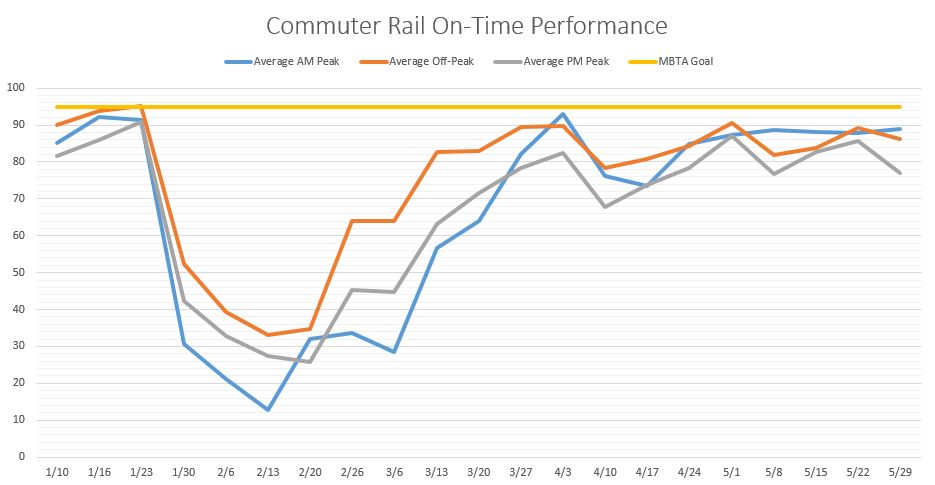MBTA Experiencing Severe Delays in Transparency
This winter the MBTA proved that it is capable of publishing complete and exhaustive performance and operation data, so why has it stopped?
We still don’t know much about the extent of this winter’s detrimental effects to our bus and subway systems. In January, the MBTA dropped its monthly performance ScoreCards which covered all modes of transportation, and included data on ridership levels, on-time performance, maintenance needs, equipment failure rates, schedule performance, and even the severity of commuter rail delays.
(Currently the ScoreCard archive can only be reached through an internet search. The MBTA’s website links to MassDOT’s Performance Management Division, which links back to the MBTA’s webpage in a loop.)
The only performance report consistently published by the MBTA since January focuses solely on commuter rail on-time performance and service levels. They are released weekly and only include data on weekday service, which is separated into peak and off-peak commuting hours.
These reports have had errors before, such as listing an on-time performance rate over 100 percent and incorrect month-to-date percentages. Unlike older reports, these give no context or interpretation to the data.
This marked decline in transparency came as the system was entrenched in its most challenging winter in decades. During peak afternoon commutes in February the number of website and mobile hits reached over 213,000 in one hour. Despite the public’s hunger for information, little was given.
An assorted list of documents released as part of the MBTA’s plan to fix itself offer a narrow window into its performance. Heavy rail fact sheets show declining on-time performance (83 percent in January to 67 percent in February) but offer little else besides a disclaimer that the true figures are likely worse once weather is accounted for.
February was only the beginning though. There were intense subway delays and cancellations through mid-March. There is still no available data for this time period.
In January this year, the MBTA began releasing General Manager Monthly Reports, a gold standard for performance reporting, but they stopped in March. These reports are reminiscent of the ScoreCard system because they include all modes of transportation, as well as various performance metrics with historical context and interpretation.
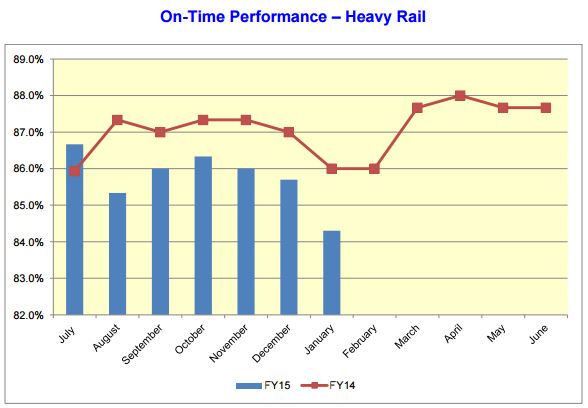
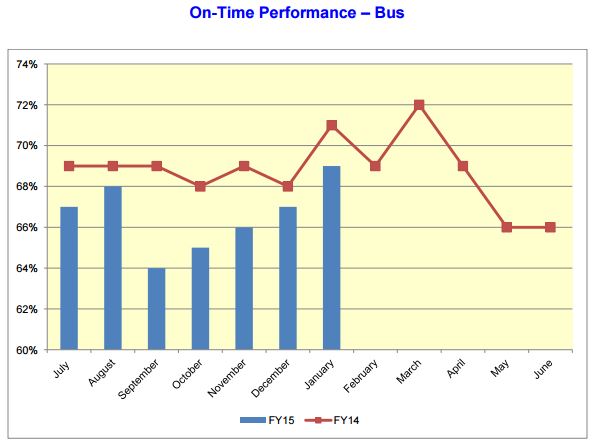 Data found in these reports tell a worrying tale of falling on-time performance and rising equipment failure rates. If reports of this quality and nature can be produced during the agency’s most trying period in recent memory, then surely performance reporting can be expanded from the current commuter rail exclusive system.
Data found in these reports tell a worrying tale of falling on-time performance and rising equipment failure rates. If reports of this quality and nature can be produced during the agency’s most trying period in recent memory, then surely performance reporting can be expanded from the current commuter rail exclusive system.
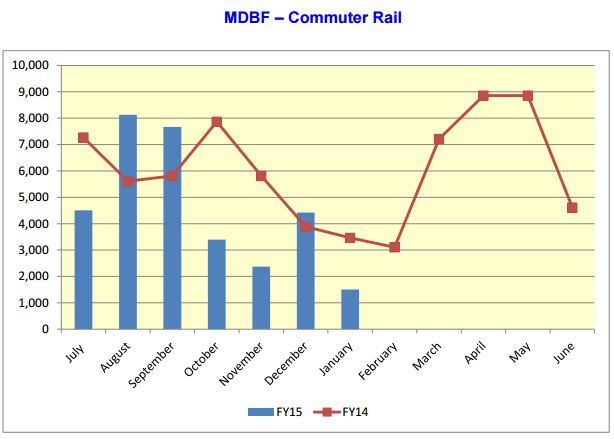
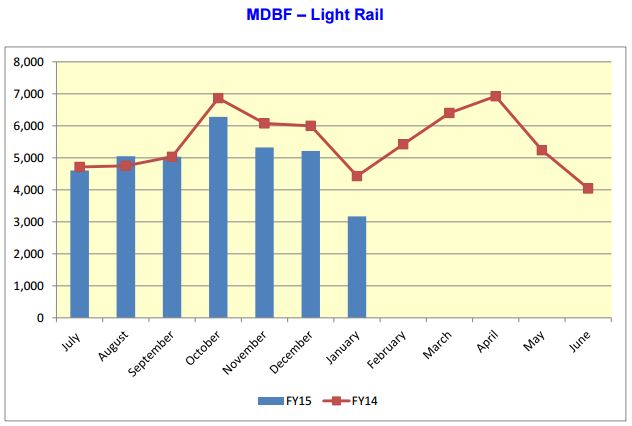 (Images taken from MBTA General Manager Monthly Report, March. Mean Distance between Failures is a standard industry measure of rolling stock failure rates.)
(Images taken from MBTA General Manager Monthly Report, March. Mean Distance between Failures is a standard industry measure of rolling stock failure rates.)
This year’s commuter rail scorecards once showed consistent improvement, but recent weeks have seen the system level off below 90 percent on-time performance. The MBTA may be willing to expose Keolis’ operational shortcomings, but seems to be afraid to expose its own performance on the subway and bus systems to public scrutiny as well.
The political will to fix our ailing transit agency has reached a fever pitch. While the governor and legislature grapple with potential solutions, the public should have its say as well. This requires comprehensive, consistent, and public performance reporting.
The fallout from this winter shows exactly why transparency is important, and this is not a lot to ask for. We all have a stake in our evolving transportation system, and can help to influence its future only if we are informed. The MBTA has the information, and the capability to disseminate it. Now if only they would.
Scott Haller is a student at Northeastern University working at Pioneer Institute through the Co-op Program.


